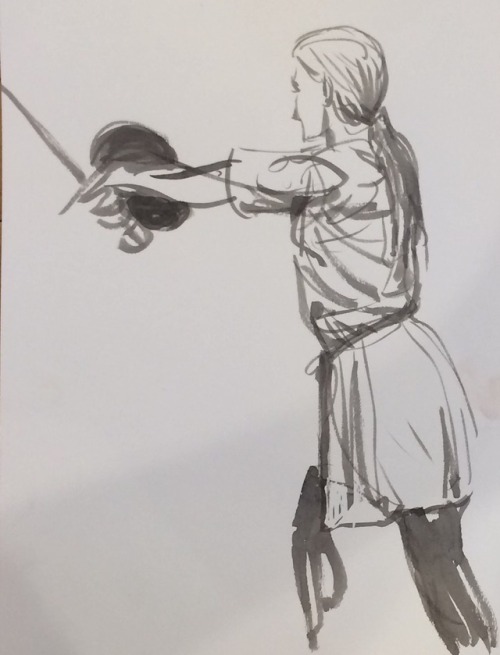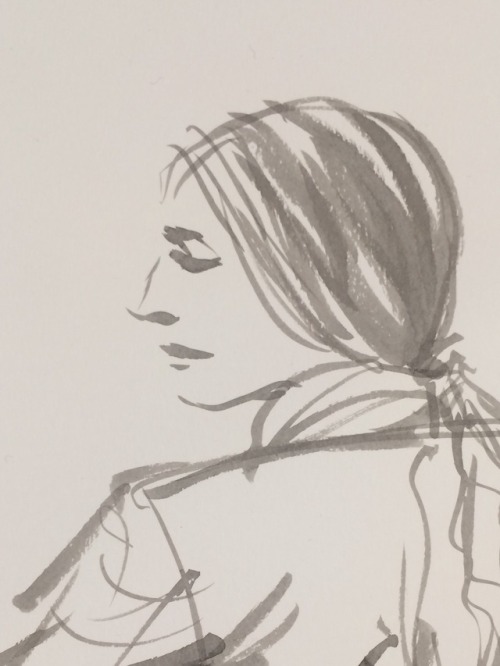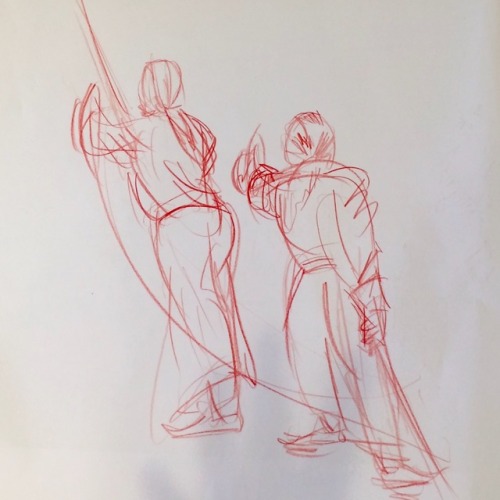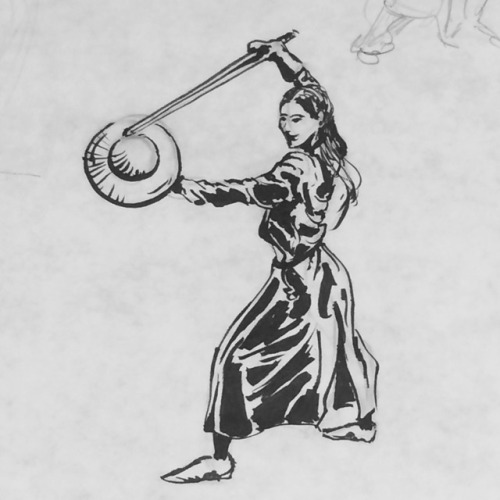#sword and buckler
I enjoyed yesterday’s training. It was the first class I’ve lead in ages, and it was structured very differently. Rather than “let me show you how I do X” or “the book says to do this when you want to X”, I went for “go do X and show me how you found works best”. A different way to approach teaching, but it seemed to meet the Fit, Fun, Functional goals pretty well.

I’ve got perhaps three more sessions of material in mind on the same theme of “inventing I.33”. Hopefully, we’ll start with basic premises such as:
- I want to hit someone with a sword [I’m likely to cut down from my dominant side]
- I want to protect my nearest targets from the other fencer’s sword [using the buckler to protect an extended sword arm is a good idea]
- If I stand there and cover a cut, there’s a risk of leg hits if they’re actually cutting low [Possibly ways to counter this are to immediately threaten a thrust off my cover, to retreat with the cover, or to make the legs a relatively less shallow target by hip hinging forwards]
And via sparring games/focused drills we’ll invent I.33. Hopefully.
The first session was extremely basic cuts, learning how an arming sword handles and coordinating it with buckler cover of the sword hand. We then introduced using the sword and/or buckler to cover a direct “caveman” head attack. It semi-organically led to a bind situation! Success!
Next session will be similar stuff on the other diagonal axis, and then thrusts and breaking them, going as far as schilt-schlach and stich-slach if we go fast.
I find that knowing the “why” makes a huge difference in the quality of repetitions - for example, the final drill we did of attack/counter-cut where one person is trying to cut to the head while not exposing the sword hand and the other is trying to cover the cut while likewise not exposing additional targets and lining up a thrust. It’s easier (in my brain anyway) to know what I want the technique to achieve and work to do that than to record a perfect and idealised form of it to mimic.
If you can handle his prose style, I have some good Luis Preto stick fighting books that discuss “ecological” training as superior to teaching forms.
It was a great joy to model at premier concept design school Syn Studio today, demonstrating I:33’s 14th century European martial arts for artists who are training to go into Montréal’s vast video game industry.
Thanks so much to Salgood Sam for inviting me again!
This work is by the following artists (I’m not 100% sure of the order), Salgood Sam, Lydia Wong, Tatiana Tung Gerencer, Renée-Claude Dostie, and Dany DiSalvo.
Post link








